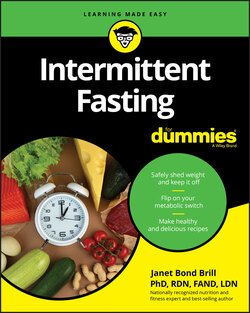Читать книгу Intermittent Fasting For Dummies - Janet Bond Brill - Страница 13
CLARIFYING STARVATION MODE: HINT, IT’S A MYTH
ОглавлениеThis nutrition myth pervades the dieting world, with confusion occurring because the term starvation mode means many different things to many different people. The often-repeated belief is that when trying to lose weight, you shouldn't drop your calories too low, because your body will go into starvation mode, and you’ll hold onto fat and stop losing weight. This is 100 percent false. You don’t gain weight or fat from eating too little. You won’t go into a starvation mode during your intermittent fasting regimen.
Consider these facts:
The starvation mode refers to the reduction in metabolic rate that occurs when the body is starved for long periods of time, such as observed in severely malnourished people with anorexia nervosa.
During severe starvation, the body does in fact slow its metabolism down, dramatically; the body's natural physiological response to an extreme reduction in calorie intake, a technique the body uses as a survival mechanism. Without it, humans would have become extinct thousands of years ago.
The starvation mode does not occur during most people’s dieting experiences. Dieting, even low-calorie diets, don’t catapult your body into starvation mode.
When you lose weight, your body will require less calories to maintain your new body weight because there's less of you, so you require fewer calories, a concept referred to as metabolic adaptation.
You can offset this metabolic adaptation and keep your metabolism as high as possible when losing weight by adding in strength-training exercise and making sure you eat enough protein.
However, intermittent fasting differs from traditional fasting. As the name suggests, intermittent fasting refers to alternating periods of fasting with periods of eating. It’s a broad term, encompassing several specific types of short-term fasting protocols. The common theme among intermittent fasting regimens is that people periodically abstain from eating for periods longer than the typical overnight fast. Individuals either fast during a certain window every day or block out certain days of the week. These short eating rest periods allow the body’s numerous systems to rest and reset without triggering the risk of malnutrition and metabolic slowdown that accompanies severely restrictive long-term fasting regimens.
Here I take a closer look at what intermittent fasting is and some of the dos and don’ts of getting started on your intermittent fasting journey.
